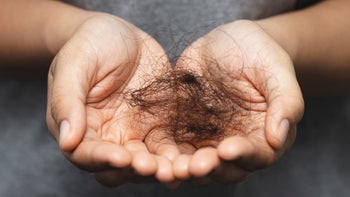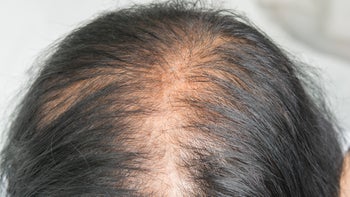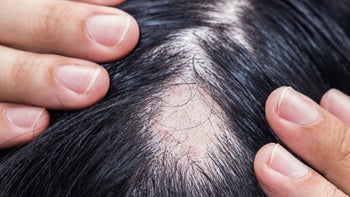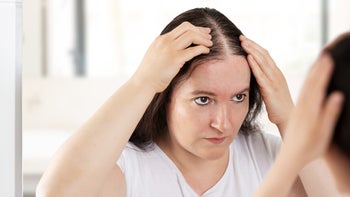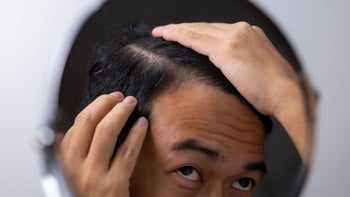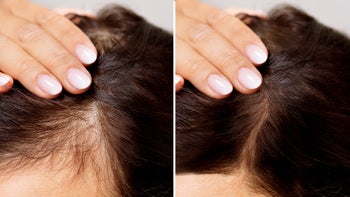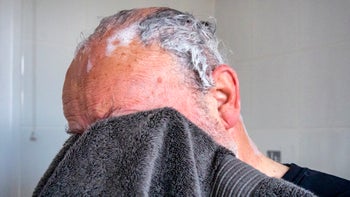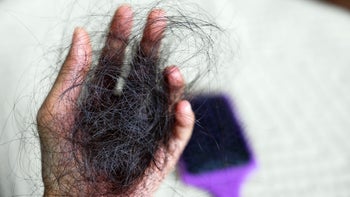
Common Causes of Thinning Eyebrows — and What You Can Do About It
Key takeaways:
Thinning eyebrows can happen naturally as you age, but they can also be a sign of an underlying health condition.
When thinning eyebrows are related to a medical condition, they can often be improved with treatment. So getting an accurate diagnosis is important.
For age-related eyebrow thinning, there are different medications and cosmetic procedures that can help restore their look.

Eyebrows are an important part of your face. They help with facial expressions and communication, and they make you look like you. Many people don’t give much thought to their eyebrows. That is, until they start noticing their eyebrows getting thinner.
It turns out that thinning eyebrows is a common concern for many people. Most of the time, this just happens naturally as you get older. But losing eyebrow hair could be a sign of an underlying health problem. Let’s take a closer look at the different causes of eyebrow thinning and when you should wonder about something more serious.
What causes thinning eyebrows?
For most people, eyebrow thinning is something that happens naturally as you get older. If you spent a lot of time plucking your eyebrows when you were younger, that could also be a contributing factor. Over time, plucking can permanently damage the follicle and keep hair from growing.
Search and compare options
In some situations, losing eyebrow hair can be a sign of a more serious underlying health problem. Common medical reasons that may lead to thinning eyebrows include:
Autoimmune conditions (like alopecia areata or psoriasis)
Skin conditions (like eczema or seborrheic dermatitis)
Hair disorders (like frontal fibrosing alopecia or telogen effluvium)
Thyroid disease (like hypothyroidism or hyperthyroidism)
Nutritional deficiency (like low zinc levels)
Certain medications (like valproic acid)
Do eyebrows thin naturally with age?
Yes. In fact, getting older is one of the main causes of thinning eyebrows. One reason for this may be a natural decline in hormones or hormone sensitivity as you age. Lower levels of hormones can affect hair follicles, causing hair to become thinner and not grow as well.
What are the symptoms of eyebrow thinning?
For most people, eyebrow thinning happens gradually over time. You may begin to notice that your eyebrows have changed from when you were younger. These changes could include eyebrows that are:
Not as thick or dark
Less defined
Narrower or shorter
Eyebrow thinning related to age is usually a gradual process and not associated with any other symptoms. The eyebrow hair loss could be related to an underlying health condition that may need treatment if you notice symptoms like:
Hair loss in other areas (like your scalp)
Eyebrow loss that’s sudden or results in bald spots
Uneven eyebrow thinning (affecting one eyebrow or just the outer part)
Eyebrow flaking, redness, or itching
What is microblading? Learn about this semipermanent cosmetic procedure that can restore or enhance the eyebrow’s natural look.
What to know about eyebrow tattoos: From cost to choosing a technician, read what you need to know about this cosmetic procedure.
Dealing with eyebrow dandruff? Find out the different causes (with pictures) and treatments for this common condition.
If you have any of these symptoms, it’s a good idea to talk with a healthcare professional.
Why do some people have naturally thick or thin eyebrows?
If you have naturally thick eyebrows, you have your genes to thank. Like other hair traits, your genetic makeup largely determines how thick or thin your eyebrows are.
Can you slow thinning eyebrows?
In general, it’s not possible to slow down eyebrow thinning that happens naturally. What you can do is avoid over-plucking your eyebrows as much as possible to prevent any permanent damage down the road. It’s also a good idea to focus on eating a well-rounded diet to make sure you get all the nutrients you need.
Can thinning eyebrows grow back?
It depends. If your eyebrows are thinning because of a medical condition (like alopecia areata or hypothyroidism), then getting treatment for that condition could help them grow back.
Age-related thinning is harder to treat, but you do have some options. Let’s take a closer look at what they are.
Medications for eyebrow thinning
A few studies have shown that two medications can help eyebrows grow back and become thicker in some people:
Latisse (bimatoprost), a prescription-strength solution approved to treat thin eyelashes
Rogaine (minoxidil), an over-the-counter solution that’s usually used for scalp hair loss
You have to apply these to your eyebrows daily, and it can take months to notice an improvement. Keep in mind that the effects aren’t permanent — you have to continue to apply to see hair growth. And the cost of medications can add up quickly.
Cosmetic options for thin eyebrows
There are some other things you can do to make your eyebrows look thicker and fuller. These aren’t permanent and don’t actually increase hair growth, but they may be simple and cost-effective alternatives:
Makeup (like eyebrow pencils and powders)
Microblading (a semipermanent treatment that can last for months)
Hair dye (done by an aesthetician or hairstylist)
Hair transplant
For people who want a more permanent solution, an eyebrow transplant is an option. This is a minor surgical procedure done in an office setting. A hair surgeon will numb you and then move individual hair follicles from your scalp to your eyebrows. The procedure can take several hours and be quite expensive — it usually costs several thousand dollars.
Frequently asked questions
It’s not possible to stop the eyebrow thinning that happens as you get older. But, you can avoid damaging your eyebrow hair follicles by minimizing eyebrow plucking. Over time, too much plucking can lead to thin eyebrows that won’t grow back.
Biotin and zinc deficiencies have both been linked to thinning eyebrows. The best way to avoid nutritional deficiencies is to eat a well-rounded diet with a variety of whole foods, like fruits and vegetables. If you think you have nutrient deficiency, a healthcare professional can diagnose it with a blood test and recommend supplements to take.
There are a few ways to make sparse eyebrows appear thicker. Medications, like Latisse and Rogaine, can help regrow eyebrow hair. You can also use hair dye, makeup, and microblading (a semipermanent treatment that lasts longer).
Certain vitamin deficiencies, like vitamin D and biotin, may be associated with hair thinning, which can involve the eyebrows. In this situation, supplementing with these vitamins can help. However, taking unnecessary supplements can cause side effects, so it’s important to talk with a healthcare professional before starting them.
The bottom line
For many people, it can be stressful to notice their eyebrows get thinner. Eyebrow thinning can happen as you age, but it can also be a sign of an underlying health condition, like hypothyroidism. Treatment for thinning eyebrows depends on the cause. So if you notice your eyebrows thinning, let a healthcare professional know so they can figure out the cause and develop a treatment plan for you.
Why trust our experts?


References
Brough, K. R., et al. (2017). Hormonal therapy in female pattern hair loss. International Journal of Women’s Dermatology.
Genetic and Rare Diseases Information Center. (2024). Frontal fibrosing alopecia.
Klingbeil, K. D., et al. (2018). Eyebrow and eyelash hair transplantation: A systematic review. Journal of Clinical and Aesthetic Dermatology.
Kobylianskii, J., et al. (2022). Queen Anne sign. Canadian Medical Association Journal.
Kumar, A., et al. (2012). Madarosis: A marker of many maladies. International Journal of Trichology.
Liu, L. Y., et al. (2020). Eyebrows are important in the treatment of alopecia areata. Journal of Investigative Dermatology Symposium Proceedings.
Riahi, R. R., et al. (2018). Topical treatment of eyebrow hypotrichosis with bimatoprost 0.03% solution: Case report and literature review. Cureus.
Saini, K., et al. (2021). Role of vitamin D in hair loss: A short review. Journal of Cosmetic Dermatology.


